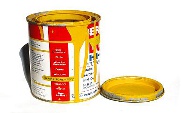LEAD
CERL, Inc
ENVIRONMENTAL CONSULTANTS
Lead base paint survey and management services available from CERL range from building/home inspections,
air monitoring, abatement oversight (on-site QA) and final cleanance inspections and sampling. CERL
personnel can provide consultation regarding compliance with such regulations as those pursuant to EPA and
OSHA.
LEAD SOURCES AND HEALTH EFFECTS
I. LEAD SOURCES
Although lead occurs naturally in small quantities in the earth's crust, by far the greatest risk of exposure to
lead derives from man-made processes and products. The use of lead in paint additives, gasoline additives,
solder, and pipes has been reduced substantially or eliminated, but the old installed products or residuals from
their use remain in the environment.
The three major sources of lead exposure today: (1) lead-based paint; (2) urban soil and dust (depositions from
paint, gasoline, and industrial sources); and (3) drinking water, primarily from leaded solder, brass fittings and
fixtures, and service lines.
A. PAINT
"Lead-based paint" is defined in the Residential Lead-Based Paint Hazard Reduction Act (also known as Title X)
as "paint, varnish, shellac, or other coatings on surfaces that contain more than 1.0 mg/cm2 of lead or more
than 0.5 % lead by weight."
Lead was used in paints for color and durability. Lead-based paint made a coating that stood up to wear and
tear and weather changes. In addition, lead was added to paints to help them dry faster. Lead-based paint was
used inside homes on woodwork, walls, floors, windows, doors, and stairs. It was also used on the outside of
homes, porches, windows, and doors. Any home built before 1978 may contain lead-based paint. Homes built
before 1960 are more likely to contain higher levels of lead. Lead-based paint is a hazard to children due to the
possibility of ingestion of lead chips. It is a hazard to both children and adults in the form of lead dust, which is
created when lead-based paint gets old or damaged. Lead-based paint is still used on bridges and on the inside
and outside of steel structures to prevent rust and corrosion. The industrial use of lead-based paint also
includes ship building and repair.
B. SURFACE DUST AND SOIL
Surface dust includes house dust and street dust. Lead in surface dust and soil of all types can come from
weathering and chipping of lead-based paint, from scraping and sanding of lead-based paint in preparation for
refinishing, and from renovations that break surfaces painted with lead-based paint. House dust can also come
from these activities. Soil outside the building is a potential source of lead in house dust because soil can be
tracked into the dwelling or blown in.
C. DRINKING WATER
Lead can contaminate drinking water primarily through corrosion of plumbing materials in the
distribution/plumbing system. Potential sources of lead in drinking water systems may include: 1) water service
mains (rarely); 2) lead plumbing goosenecks or pigtails; 3) lead service lines and interior household plumbing,
especially where lead solder was used; 4) lead-containing alloys, such as faucets or valves made of brass or
bronze. This is primarily a problem in older houses constructed before the use of lead pipes and solder was
discontinued.
D. FOOD
Food can be contaminated by deposition of airborne lead onto crops or water, during transportation or
processing, or from containers with lead solder, lead glaze or other materials with lead. Since November 1991,
lead-soldered cans are no longer produced in the United States.
E. AIR
The EPA phase-down of leaded gasoline, the introduction of unleaded gasoline in new cars, and attrition in the
number of vehicles that use leaded gasoline has resulted in significant reductions of lead contamination in air
over the past several years. Air can be contaminated by emissions from stationary sources, such as smelters
and battery factories, and from the combustion of oil, coal, waste oil, and municipal wastes. Windblown dust is
another source of air contamination. Lead emissions from industrial and other stationary sources have
declined because of compliance with State air quality plans and regulations aimed at achieving national air
quality standards.
F. PRODUCTS
Lead is used in many different types of products. These include batteries, ceramics, lead crystal, bullets and
plastic. The use or improper disposal of these products can result in contamination of soil, water and air.
II. HEALTH EFFECTS
When exposed to an environment that contains lead, an individual can transfer lead into body tissues through
eating (ingestion) or breathing (inhalation) fine particles of lead compounds. Inhalation and ingestion are the
major routes of exposure for both children and adults.
Once in the body, lead is distributed via the bloodstream to red blood cells, soft tissue, and bone. It binds with
the chemicals that aid biological reactions, particularly in the blood-forming system, the brain and nerves, and
the kidneys, and interferes with the synthesis of many body chemicals. It is eliminated very slowly by the
kidneys and gastrointestinal tract; much smaller amounts are lost through perspiration. Lead poisoning can
result from a single, high level exposure, or from a series of low-level exposures over a period of time.
SOME HEALTH EFFECTS OF LEAD POISONING
Anemia, High blood pressure, Damage to blood cell formation, Kidney disease, Brain & Nerve damage,
Decreased fertility, Premature births and Miscarriages. Some effects of lead poisoning can be reversed. e.g.
High blood pressure can return to normal when the lead in the body decreases. Lead poisoning can also cause
permanent damage. An example of permanent damage caused by lead is wrist drop. Wrist drop is when the
wrist hangs limp at the end of an arm, and it may prevent use of that hand again. Wrist drop is caused when
lead damages the nervous system. Lead can cause permanent damage to:
Brain, Learning ability, Coordination, Hearing, Nerves Digestive system, Heart, Blood cell formation, Kidneys
and Reproductive system.


